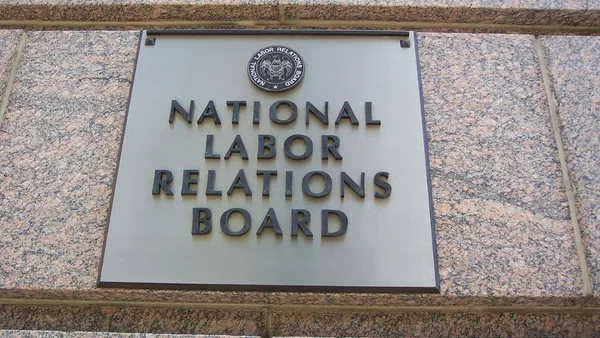In August 2015, the National Labor Relations Board sent employers down a rabbit hole — and with few decisions made since, many still feel as though they are falling.
The Browning-Ferris ruling by the NLRB claimed that employers who contracted services from other companies, such as temp worker providers, would be jointly liable with the companies that provided those services. In other words: If the company your company is working with isn't compliant, you could be partly to blame.
One important consequence of this ruling is that it threatens the old understanding of the franchiser-franchisee relationship. Franchisees were once seen as independent from the corporate entity, lessening burden on the corporate partners. This ruling could instead imply that franchisers, like McDonald's, could be held responsible for employees of their franchisees, increasing the compliance burden by thousands of employees.
Now that a year has passed, what's changed? According to the experts: Not enough. HR Dive spoke with Jeffrey Rubin, an associate at Dechert LLP specializing in employment law, and Michael Cardman, legal editor at XpertHR, to get an update.
A year out, what do employers need to know about the rule right now? What should stay on their radar?
Unfortunately, most of the joint liability issue remains unsettled, Rubin said. The Browning-Ferris case is currently on appeal to the DC circuit. In the meantime, the DOL has been applying the standard when applicable, and will until told otherwise by the Supreme Court. It's a part of the EEOC and DOL's recent push to broaden employee rights and protections, especially if a Democrat is elected to the presidency in November.
So far it seems that few lawsuits have emerged on the issue. Many concerns may hinge on what happens to McDonald's over the sexual harassment complaints as well as the current NLRB complaint against the company. Employers may not see much legal action until after the situation is sorted there, Cardman said.
"I think employers would welcome some further guidance about this in one way or another," Cardman added. "The terms can be vague and ambiguous."
But currently, employers are stuck in a holding pattern until decisions are made either way.
Have there been any weird or unexpected consequences out of the new rule?
The most unexpected aspect of joint liability was largely foreshadowed by the dissent of the original ruling, Rubin said. The current rule could affect any company in a contractual relationship with another company — and many employers never expected they would be open to such an obligation.
Compliance over joint employment relationships is fairly encompassing, Rubin added. For temp workers onsite, for example, a company that employs those workers must ensure it is compliant with all the typical employee concerns, including wage and hour, NLRB rules, FLSA and the like – meaning more burden on HR.
The companies and types of relationships that are considered "joint" are still up in the air, however, and a clear line has yet to be drawn thanks to the few rulings on hand.
What can employers do right now? What changes are on the horizon?
Rubin suggests that employers "keep their ear to the ground" as far as what the agencies will say about the employer relationship. Currently, he counsels employers to look over their policies with respect to third-party entities and try to "separate control of those entities to the maximum extent that you can" while still controlling the core things that matter to your business in the relationship.
"When it comes down to it, it is a case of risk assessment," Cardman said. Employers tend to have two choices.
- Try to minimize the relationship with and control over workers from the third-party contractor. But this may still put a company at risk if the third-party violates labor laws.
- Employers can work with the third-party and provide guidance, but a Catch-22 may persist, in that it creates more evidence that the relationship is "joint."
Employers will have to balance the potential risks with how important the joint relationships are to an employer.
However, this issue reflects the ongoing changes happening in the employment realm, particularly challenges brought on by gig work and independent contractors.
"The genie is out of the bottle," Cardman said. "I don't think we are going back to a 9-5 reality, so this is just another area where the legal system is catching up with how we work today."













